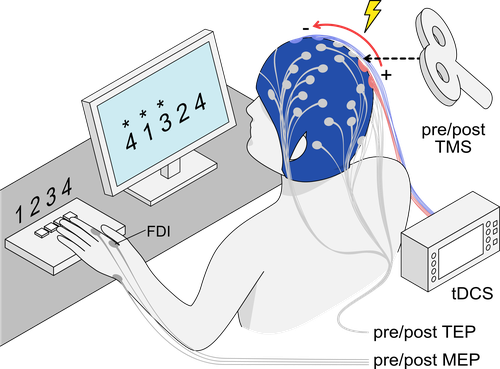

 based on reviews by 1 anonymous reviewer
based on reviews by 1 anonymous reviewer

DOI or URL of the report: https://osf.io/kxrdb
Version of the report: 2.0
Dear Dr. Artemenko,
Here we submit the latest version of our Stage 2 manuscript with the requested minor revisions. Please note that we made a correction to the statistics for one of our exploratory analyses (correlation between performance and sensation) that was wrong due to a previous mistake in the analysis code. We also added a statement about how EEG may have affected the results (under "Comparison to our previous results and pilot data"). We are very grateful for the thoughtful feedback!
Best regards,
Gavin Hsu and Lucas Parra
 , posted 09 Oct 2024, validated 09 Oct 2024
, posted 09 Oct 2024, validated 09 Oct 2024Dear Gavin Hsu and Lucas Parra,
Thank you for submitting your Registered Report "Dose-response of tDCS effects on motor learning
and cortical excitability: a preregistered study" for stage II. One of the original reviewers evaluated your registered report, without any critical remarks. The positive feedback you can find below. I also read the added parts of the manuscript. Taken together, I would like to accept your registered report - pending (really) minor revisions.
Please upload a manuscript without marked changes. In this manuscript, please consider this last point:
Small edits to consider when producing the manuscript without marked changes:
Looking forward to the final version of your manuscript!
Best regards,
Christina Artemenko
The data appear adequate to test the proposed hypotheses. The study employed well-established methods to measure motor performance (NCS) and corticospinal excitability (MEP amplitudes) while manipulating tDCS dose. The statistical models (linear models, Bayes factors) were appropriate for addressing the hypotheses, and the study included quality checks such as examining correlations between typing speed and motor skill learning, confirming that the groups were homogeneously assigned.
Moreover, the data do not seem to suffer from floor or ceiling effects, as performance gains were visible, and the measures used captured a range of responses across subjects. The study also conducted positive controls, such as confirming an overall increase in MEP amplitudes and motor learning gains, suggesting that the task was suitable for assessing the effects of tDCS and motor learning in general. Thus, the data were able to appropriately test the hypotheses under the study's framework, though they ultimately revealed null results.
The authors' conclusions are largely justified based on the evidence presented in the results section. The primary hypotheses (H1: effect of tDCS dose on motor performance; H2: effect of tDCS dose on corticospinal excitability; H3: correlation between motor performance and MEP changes) were rigorously tested using appropriate statistical methods, and all three hypotheses failed to show significant effects. Additionally, the exploratory analyses involving TEPs revealed interesting post-stimulation cortical changes (e.g., at the 45ms peak), which correlated with motor learning gains, albeit independently of tDCS intensity. These analyses were justified since they provide further insights into the neural mechanisms underlying motor learning and are methodologically sound.
In conclusion, the lack of tDCS effects on motor performance and MEPs, along with the exploratory findings regarding TEPs, are consistent with the presented data and statistical analyses. The authors’ careful interpretation of their null findings is methodologically sound and informative.